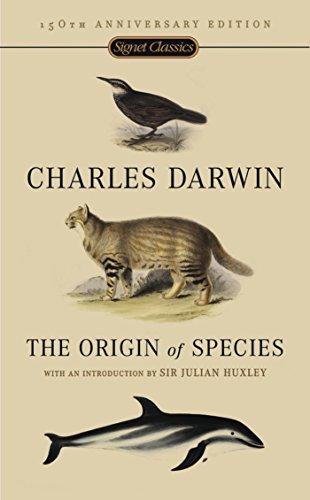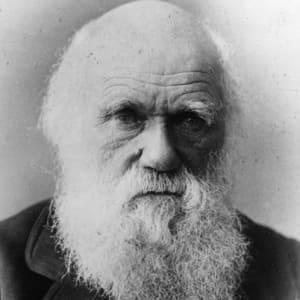On the Origin of Species Summary
7 min read ⌚
 By Means of Natural Selection, or the Preservation of Favoured Races in the Struggle for Life
By Means of Natural Selection, or the Preservation of Favoured Races in the Struggle for Life
In 1859, Charles Darwin changed the world.
Read the summary of “On the Origin of Species” to discover how.
Who Should Read “On the Origin of Species”? And Why?
“On the Origin of Species” is the foundational text of the life sciences.
And it’s also one of the most influential books ever written.
So – everybody.
Because everybody says so.
 About Charles Darwin
About Charles Darwin
Charles Darwin was an English biologist, geologist, and naturalist, the man who first convincingly demonstrated that evolution is a fact and scientific theory.
One of the most influential figures in human history,” Darwin presented his theory in 1859 in “On the Origin of Species.”
Twelve years later, he applied it on humans in “The Descent of Man.”
And changed everything.
“On the Origin of Species PDF Summary”
No need to tell you this:
At about 500 pages in its original edition, “On the Origin of Species” is Charles Darwin magnum opus and, quite possibly, the most influential nonfiction book ever written.
Even though some of its findings have been modified in the century and a half which has passed since its publication, it’s safe to say that no summary can ever do enough justice to this book.
In other words, you should definitely try to find some time to read this book in the recent future.
In the meantime, here’s a summary which takes a look at Darwin’s most important ideas, tiptoeing around his evidence for the sake of brevity and simplicity.
“On the Origin of Species” is divided into fourteen chapters prefaced by an Introduction which gives an outline of the book and states its purpose.
Chapter I, titled “Variation Under Domestication” sets the terrain for Darwin’s main idea, i.e., natural selection, by providing a suitable analogy the accuracy of which cannot be questioned by anyone.
Namely, Darwin uses Chapter I to explain how speciation occurs in front of our very eyes in domestic environments, and how breeders are capable of selecting the traits of their liking and producing the species of their own imagination almost effortlessly in some cases.
Darwin reminds us of “that most skillful breeder, Sir John Sebright,” who apparently had a habit of saying “with respect to pigeons, that ‘he would produce any given feather in three years, but it would take him six years to obtain head and beak.’”
In other words, many pigeons, cats, and dogs are products of the process of human selection.
Now – asks Darwin in Chapter II, “Variation Under Nature,” – if humans can create (and have created) species, why shouldn’t Nature be able to do the same:
As man can produce and certainly has produced a great result by his methodical and unconscious means of selection, what may not natural selection effect? Man can act only on external and visible characters: Nature… cares nothing for appearances, except in so far as they are useful to any being. She can act on every internal organ, on every shade of constitutional difference, on the whole machinery of life. Man selects only for his own good; Nature only for that of the being which she tends.
Chapter III, “Struggle for Existence” is where Darwin explains how this happens.
And it’s quite simple, since for variation under nature to happen no more than few simple premises need to be accepted:
#1. Organisms reproduce and, through reproduction, they pass some of their traits to other generations;
#2. There is a limited amount of resources, so not all organisms can be supported;
#3. Those who survive are the ones who will pass their traits to the following generations;
#4. Consequently, the traits that will be passed are the ones that have allowed them to survive.
In other words, the struggle for life favors the strongest, i.e., Nature selects the organisms which are best adapted to a certain environment.
Chapter IV, “Natural Selection” is the elucidation of how this works in practice.
Here Darwin explains how much more powerful is natural selection when compared to human selection, especially when time is taken into account.
He then analyzes which circumstances are favorable and which are not for natural selection and how natural selection causes extinction and divergence on the descendants from a common parent.
He ends this chapter (which includes “a diagram of divergence of taxa,” the only illustration in the original edition) with an amazing discovery – that all organic beings can be grouped and traced to a single or few ancestors.
It is a truly wonderful fact,” he exclaims here, “the wonder of which we are apt to overlook from familiarity – that all animals and all plants throughout all time and space should be related to each other.
With the more technical Chapter V, “Laws of Variation,” Darwin wraps up the main points of his “theory of descent with modification” (as he calls it) and in the next three chapters tries to address some of its shortcomings in advance.
Chapter VI, “Difficulties on Theory” attempts to answer two questions: 1) “why, if species have descended from other species by insensibly fine gradations, do we not everywhere see innumerable transitional forms?” and 2) “Can we believe that natural selection could produce, on the one hand, organs of trifling importance, such as the tail of a giraffe, which serves as a fly-flapper, and, on the other hand, organs of such wonderful structure, as the eye, of which we hardly as yet fully understand the inimitable perfection?”
Chapter VII, “Instinct” and Chapter VIII, “Hybridism” address the remaining difficulties: 1) “can instincts be acquired and modified through natural selection?” and 2) “how can we account for species, when crossed, being sterile and producing sterile offspring, whereas, when varieties are crossed, their fertility is unimpaired?”
Chapter IX, “On the Imperfection of Geological Record” and Chapter X, “On the Geological Succession of Organic Beings” are Inspired by Charles Lyell’s “Principles of Geology” and examine fossil records, while the next two chapters – Chapter XI and Chapter XII deal with “Geographical Distribution.”
The eclectic Chapter XIII, baroquely titled “Mutual Affinities of Organic Beings: Morphology: Embryology: Rudimentary Organs,” abounds with interesting (if sometimes philosophical) evidence of Darwin’s common descent theory.
As suggested by its title, Chapter XIV, “Recapitulation and Conclusion” reviews the most important points of the book, and concludes with a quote-worthy paragraph:
Thus, from the war of nature, from famine and death, the most exalted object which we are capable of conceiving, namely, the production of the higher animals, directly follows. There is grandeur in this view of life, with its several powers, having been originally breathed into a few forms or into one; and that, whilst this planet has gone cycling on according to the fixed law of gravity, from so simple a beginning endless forms most beautiful and most wonderful have been, and are being, evolved.
Key Lessons from “On the Origin of Species”
1. Natural Selection = Selective Breeding + Time – Humans
2. The Survival of the Fittest
3. All Species Have Descended from Common Ancestors
Natural Selection = Selective Breeding + Time – Humans
Men are capable of creating species in domestic environments through selective breeding.
Darwin says: well, Nature does the same.
And over eons of time, it has created every species in existence.
The Survival of the Fittest
The survival of the fittest” is actually an expression by Herbert Spencer, but Darwin says that it is equally convenient as his “natural selection.
This is why:
Owing to this struggle for life, any variation, however slight and from whatever cause proceeding, if it be in any degree profitable to an individual of any species, in its infinitely complex relations to other organic beings and to external nature, will tend to the preservation of that individual, and will generally be inherited by its offspring. The offspring, also, will thus have a better chance of surviving, for, of the many individuals of any species which are periodically born, but a small number can survive. I have called this principle, by which each slight variation, if useful, is preserved, by the term of Natural Selection, in order to mark its relation to man’s power of selection.
All Species Have Descended from Common Ancestors
If God created all species independently, then why are they so similar?
What can be more curious,” asks at one place Darwin, implicitly suggesting that independent creation shouldn’t be able to survive the Occam’s razor when faced with natural selection, “than that the hand of a man, formed for grasping, that of a mole for digging, the leg of the horse, the paddle of the porpoise, and the wing of the bat, should all be constructed on the same pattern, and should include the same bones, in the same relative positions?
Like this summary? We’d like to invite you to download our free 12 min app, for more amazing summaries and audiobooks.
“On the Origin of Species Quotes”
One general law, leading to the advancement of all organic beings, namely, multiply, vary, let the strongest live and the weakest die. Share on X
Man selects only for his own good: Nature only for that of the being which she tends. Share on X
I see no good reasons why the views given in this volume should shock the religious views of anyone. Share on X
If it could be demonstrated that any complex organ existed, which could not possibly have been formed by numerous, successive, slight modifications, my theory would absolutely break down. But I can find no such case. Share on X
Natural Selection… is a power incessantly ready for action, and is immeasurably superior to man's feeble efforts, as the works of Nature are to those of Art. Share on X
Our Critical Review
There are not many books more important or more seminal than “The Origin of Species.”
And we can’t stress that enough.
Over to you.
Emir is the Head of Marketing at 12min. In his spare time, he loves to meditate and play soccer.


 By Means of Natural Selection, or the Preservation of Favoured Races in the Struggle for Life
By Means of Natural Selection, or the Preservation of Favoured Races in the Struggle for Life About Charles Darwin
About Charles Darwin




